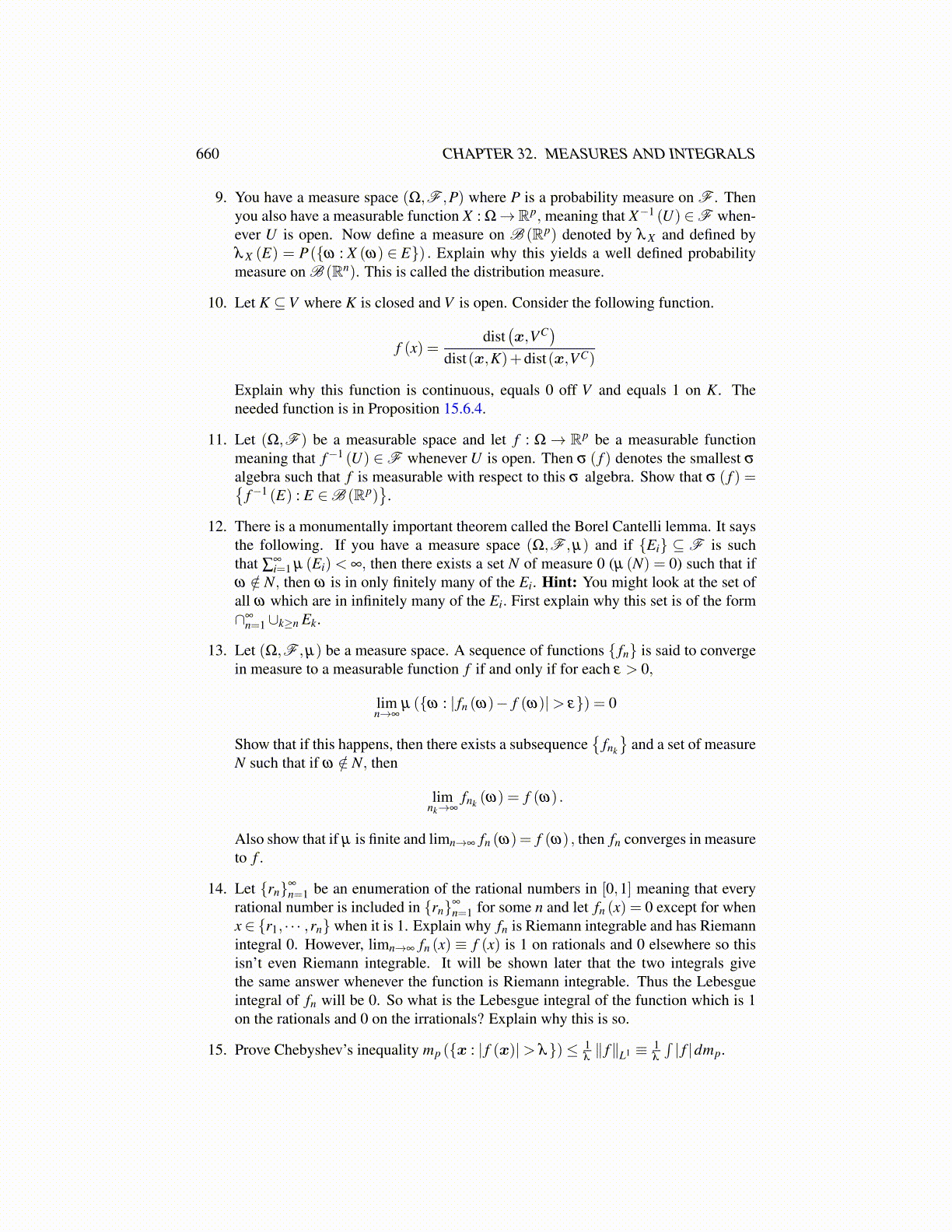
660 CHAPTER 33. THE LEBESGUE MEASURE AND INTEGRAL IN Rp
given above,m([a,b]) = m((a,b)) = b−a
Definition 33.4.1 Let f be a function of p variables and consider the s ymbol∫· · ·∫
f (x1, · · · ,xp)dxi1 · · ·dxip . (33.2)
where (i1, · · · , ip) is a permutation of the integers {1,2, · · · , p} . The symbol means to firstdo the Lebesgue integral ∫
f (x1, · · · ,xp)dxi1
yielding a function of the other p−1 variables given above. Then you do∫ (∫f (x1, · · · ,xp)dxi1
)dxi2
and continue this way. The iterated integral is said to make sense if the process just de-scribed makes sense at each step. Thus, to make sense, it is required
xi1 → f (x1, · · · ,xp)
can be integrated. Either the function has values in [0,∞] and is measurable or it is afunction in L1. Then it is required
xi2 →∫
f (x1, · · · ,xp)dxi1
can be integrated and so forth. The symbol in 33.2 is called an iterated integral.
With the above explanation of iterated integrals, it is now time to define p dimensionalLebesgue measure.
33.4.2 p Dimensional Lebesgue Measure and IntegralsConsider (R,F ,m) the measure space corresponding to one dimensional Lebesgue mea-sure. Then from Proposition 32.12.2, we obtain the existence of p dimensional Lebesguemeasure.
Proposition 33.4.2 There exists a measure mp defined on F p such that if f : Rp →[0,∞) is measurable with respect to F p then for any permutation (i1, · · · , ip) of {1, · · · , p}it follows ∫
Rpf dmp =
∫· · ·∫
f (x1, · · · ,xp)dxi1 · · ·dxip (33.3)
In particular, this implies that if Ai is a Borel set for each i = 1, · · · , p then
mp
(p
∏i=1
Ai
)=
p
∏i=1
m(Ai) .
and all such ∏pi=1 Ai is in F p.